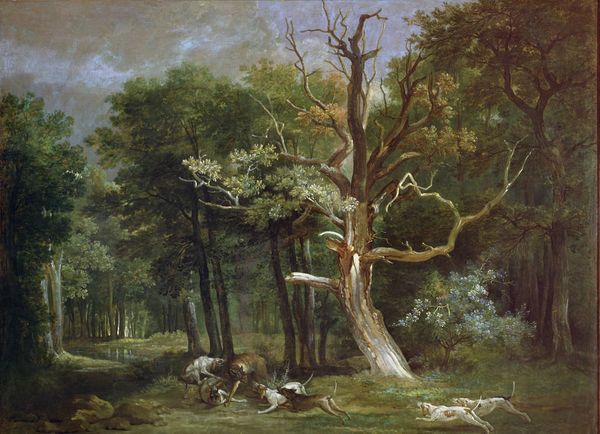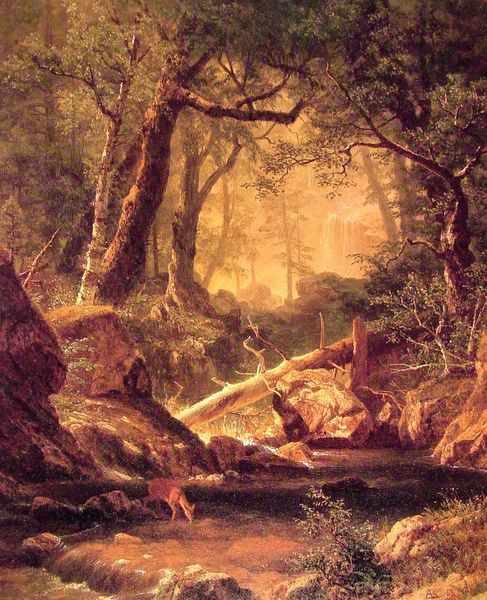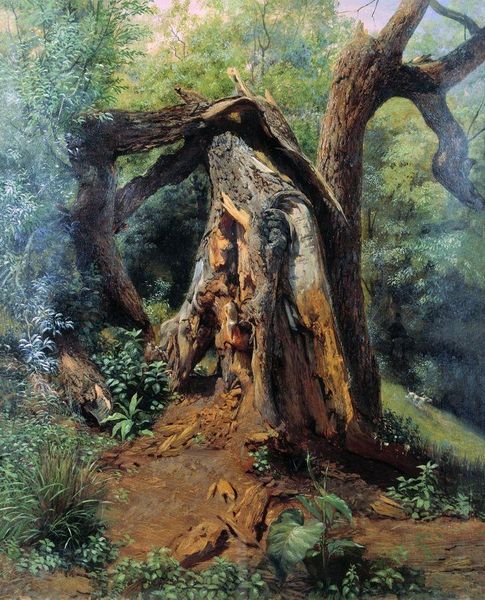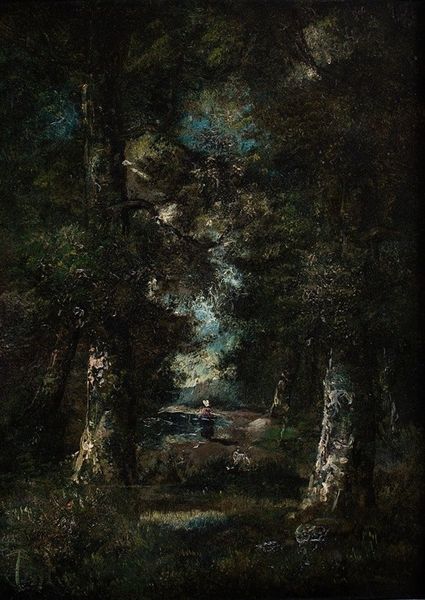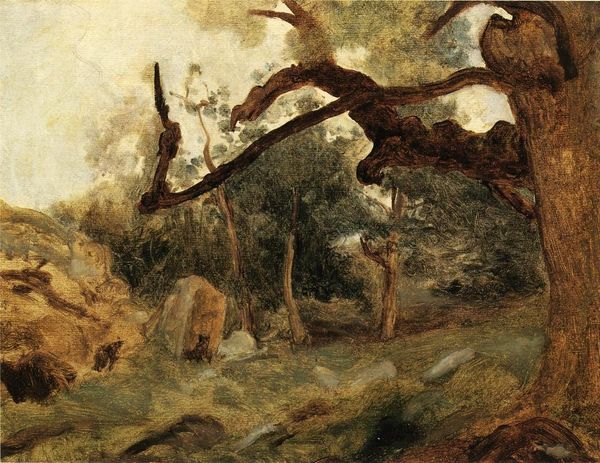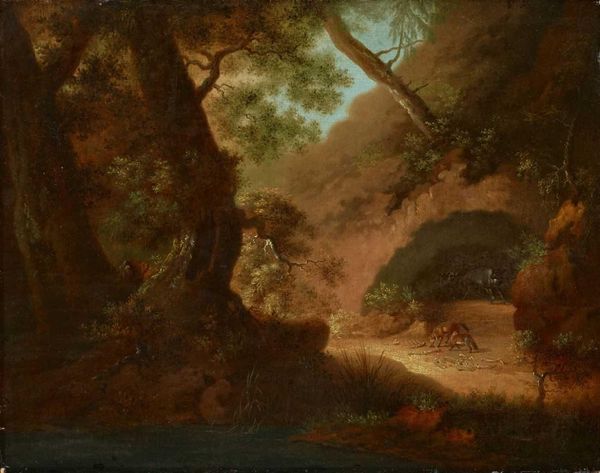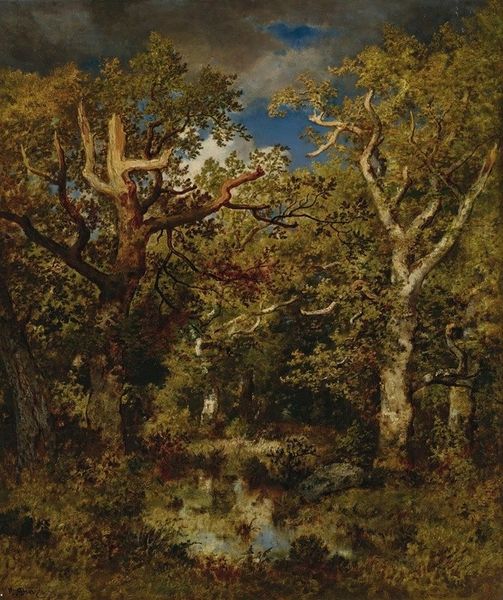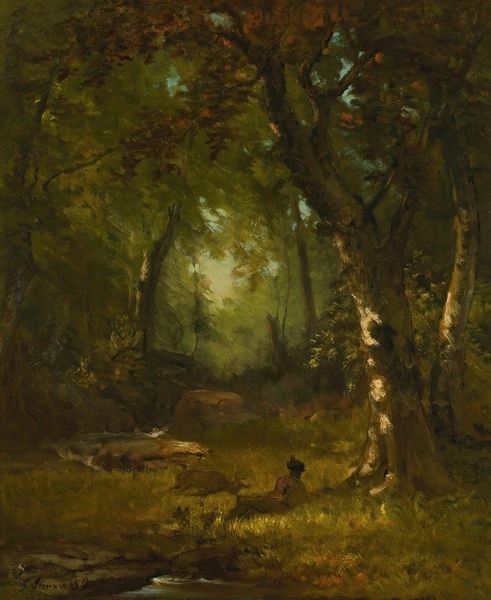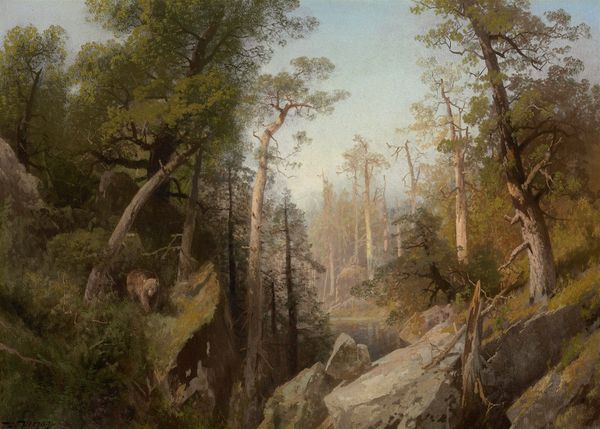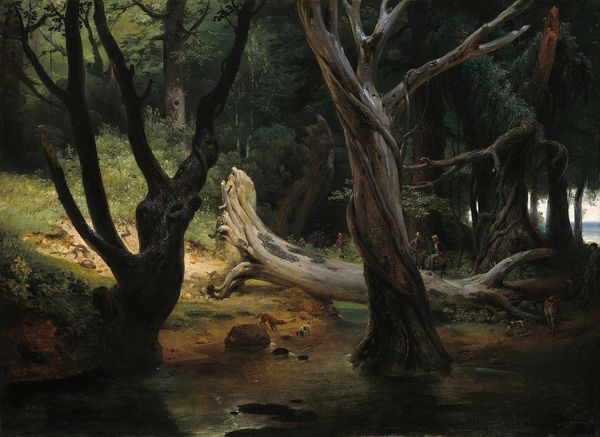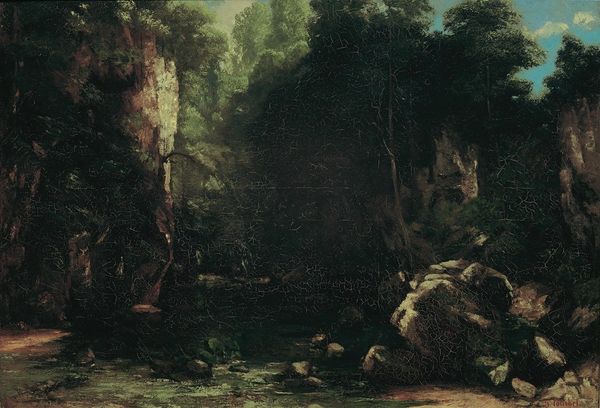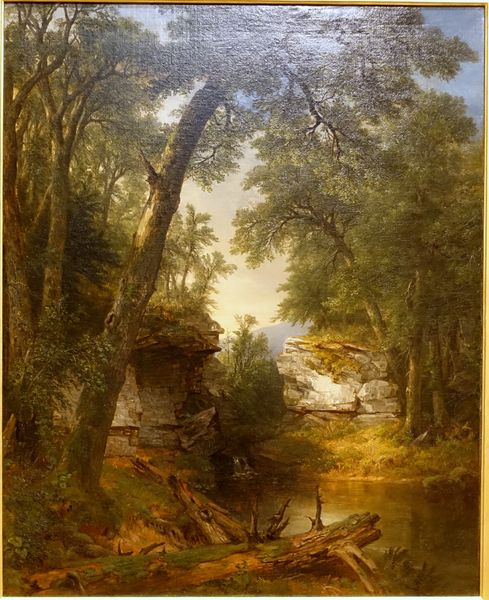
oil-paint
#
tree
#
sky
#
oil-paint
#
landscape
#
forest
#
romanticism
#
natural-landscape
#
men
#
history-painting
#
nature
#
realism
Copyright: Public domain
Editor: So, this is Horace Vernet's "Hunting in the Pontine Marshes," painted in 1833 using oil paints. It feels... brooding. Almost like nature is swallowing up the hunters, doesn't it? What symbols jump out at you in this work? Curator: The most immediate symbol is the forest itself, a long-standing archetype of the unconscious, the unknown. Vernet paints a scene where civilization, represented by these hunters, ventures into a primordial space. Do you notice how the figures are diminutive, almost absorbed by the density of the woods? Editor: I do now that you point it out. It’s as if the forest is indifferent to their presence. What about the broken trees? They seem pretty significant. Curator: Precisely. Those fractured trees, with their jagged edges pointing skyward, are potent symbols of disruption, perhaps a consequence of man's intrusion. But they also speak to resilience, a tenacity for life despite damage. Consider the cultural context: Romanticism's fascination with ruins, both natural and man-made, reflected a broader anxiety about the impermanence of human achievement against the enduring power of nature. Editor: So, the painting isn’t just a depiction of a hunt; it’s more of a commentary? Curator: Indeed. Think about what the hunt represents symbolically: the act of dominance, of control over the natural world. But here, nature seems to be pushing back, reasserting its power. Do you see it in the overall composition? The way the light filters, creating this sense of enclosed space? Editor: Yes, the light seems almost strategic, highlighting the forest's density while shrouding the hunters in shadow. I never would have considered all these layers looking at it on my own. Curator: Visual symbols whisper across centuries. To truly see an image is to understand the voices that speak within it. Editor: I learned how important cultural context is for interpretation, going beyond the immediate visual impression.
Comments
No comments
Be the first to comment and join the conversation on the ultimate creative platform.
